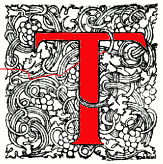In transcribing the following paragraphs from the Internet Archive online version of The Imperial Gazetteer’s entry on Egypt I have divided the long entry into separate documents, expanded abbreviations for easier reading, and added paragraphing and links to material in the Victorian Web. Unless otherwise noted, charts and illustrations come from the original Gazetteer. — George P. Landow


he modern city, though the scene of much bustle and gaiety, has no pretensions to any of the splendours of its predecessor; if we except, perhaps, that picturesque and distinguishing feature of Eastern cities the minaret, some of those of Alexandria being of great elegance and beauty, as will be seen from the accompanying woodcut. The streets in the Turkish quarter are narrow, dirty, and irregular; the houses are, in general, from three to four stories in height, and are substantially built, but have a dull monotonous appearance, from want of windows to the streets. In the Frank quarter, which has greatly increased of late years, the town wears a more lively and agreeable aspect. The houses are clean, and brilliantly whitewashed, and the principal street is the finest and largest in the city. In the Frank quarter is a large and elegant square, called the Pierra Grande, in which are the principal hotels, and most of the consulates. There is a small theatre in the city, but no regular corps dramatique, the actors being all amateurs and Europeans. During the carnival, the city becomes very gay with public and private balls, the former at the Cassino, and with other festivities.

Minarets at Alexandria From Horeau, Panorama de l'Egypte.
The streets are at all times crowded with camels, mules, and asses, whose drivers maintain a constant din, calling on passengers to keep out of the way, to which are added the vociferations of jug glers, mountebanks, and hawkers. The mixed character of the population, however, and the great variety of costume that meets the eye, give to the streets a lively and interesting appearance, in despite of their want of all other attractions. Shops are numerous, and well supplied with all sorts of European goods, tastefully arranged and displayed. There are few bazaars, but they are amply provided with cloth, tobacco, sherbet, and vegetables.
The only objects of interest in the town are the Pasha’s palace and the arsenal; the former is not remarkable for splendour, either external or internal with the exception of a few of the apartments, which are fitted up in good taste, simplicity being their prevailing characteristic. The arsenal, which was begun in 1827, occupies a site of 60 acres, with a good frontage to the sea. It is provided with slips for line-of-battle ships and frigates, but all the anchors, cables, tanks, and ordnance used are brought from England. Several educational and judicial institutions in the city, mark the liberal policy of Mehemet Ali. Amongst these are two schools a preparatory school with 800 pupils, and a primary school with 200. Commercial differences are settled by a national tribunal of commerce, one of which is at Alexandria, and another at Cairo.
There is also a board, called the commission of ornament, composed of Egyptians and Europ eans, for the promotion of cleanliness and general order, and propriety in the erection of new buildings, which cannot be begun without the consent of this body. The commission has power to remove all nuisances affecting the public health, and has already done much for the city in the way of ven tilation. The exemption, however, of church lands, or property belonging to mosques, from all liabilities of any kind, even the interference of the sovereign not excepted, has been found a great hinderance to progress of improve ment. There is a naval hospital in the city, intended for the special benefit of that service, but to which other persons are admitted on an order from the governor. There are also a school for the marine, and a board composed of naval officers, for examining into the merits of candidates for appointments in the navy. The most remarkable evidence, however, of Mehemet Ali’s liberality of sentiment, is to be found in the circumstance of his having lately granted a plot of ground in Alexandria, for the site of a Protestant chapel (begun to build in 1847), for the use of the British community there. There is a slave market in the town, but it is not always open; and, in such cases, the slaves are paraded through the streets, and are stopped and examined like beasts of burden.
Alexandria’s Two Seaports

lexandria has two ports, one on the East side, called the New, or Asiatic harbour; the other on the West, called the Old port (anc. Eunostos}. The entrance to the latter is difficult, there being many shoals on which there is not sufficient water to float vessels of large size, and firstrate line-of-battle ships are obliged to take out their guns, to enable them to enter with safety. Once in, however, they have good anchorage, with ample depth of water. The deepest part, due West and due North of the catacombs, is from 10 to 11 fathoms; within 200 feet of the shore, it is from 4 to 6 fathoms: and immediately under the town, a cable’s length off, 3 and 4 fathoms. The Old port might be made one of the finest in the world; and if the improvements which have been going on for some time be continued, it is probable it will become so. The New harbour is greatly inferior to the latter, being much less, with a foul and rocky bottom, besides being exposed to the North winds. [1.78-89]
Bibliography
Blackie, Walker Graham. The Imperial Gazetteer: A General Dictionary of Geography, Physical, Political, Statistical and Descriptive. 4 vols. London: Blackie & Son, 1856. Internet Archive. Inline version of a copy in the University of California Library. Web. 31 July 2020.
Last modified 1 August 2020